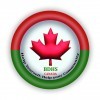Electric heating: Why is it so popular? Paid
2 years ago - Doctors - Barrie - 32 views$ --
Electric heating: Why is it so popular?
For many homeowners, electric heating is the easiest way to heat spaces where a central heating system might not reach. After all, electricity is readily available.
Electric heating installation
Electric heating is easier and significantly cheaper to install than other heating methods like gas, oil, or biomass. There are no pipes to install, and no flooring to lift. In fact, many electric heaters can simply be plugged in no wiring necessary. Most can be screwed onto the wall using simple brackets too, making installation a DIY job that most people will be able to do.
We provide an electric heating installation service for local customers in Dundee and the surrounding areas.
Running costs of electric heating
Electric heating has a negative reputation when it comes to running costs. If a home has good insulation installed and modern, efficient electric heaters, then electric heating can still be perfectly efficient for some homes.
Most electrically heated homes use storage heaters. Storage heaters use cheaper off-peak electricity to heat up during the night, releasing the heat into your home during the day when its needed.
Modern high heat retention storage heaters are better insulated, so are more able to store heat that can be used when you need it, rather than leaking heat constantly throughout the day. Their heat output is more controllable, and fan assisted, so you can heat a room up faster or keep it cool if youre not using it.
How to use immersion heaters in chemical process applications
Immersion heaters have a variety of applications in the chemical process industries. Knowing which heaters to specify and how to install them can make a manufacturing process more cost-efficient. Its time to learn about immersion heater types; typical applications; and selecting, sizing, specifying, installing and using the heater.
Immersion heaters, as the name implies, are immersed in water, oils, solvents, process solutions, molten materials and gases, where they release all their heat within the fluid, which makes them nearly 100% energy-efficient. Immersion heaters are offered in a wide variety of sizes, kilowatt ratings, voltages, terminations, sheath materials and accessories. They are often custom engineered for a specific application.
The basic immersion heater configurations are the screw plug, flange, pipe insert or bayonet, circulation or in-line, booster, and of an over-the-side style. They?re usually available in a round tubular design or a flat tubular design. The flat variety can operate at a higher watt density without overheating the sheath. Heaters also are grouped into two categories ? pressurized (closed) systems and non-pressurized (open tank) systems.
Understanding Electric Process Heaters
Electric process heaters use electricity to increase the temperature of liquids and gases within process systems. Depending on the application, electric process heaters may be used for both direct and indirect heating, which makes them a particularly versatile heating option. To help you find the best electric heater for your needs, we have compiled a concise summary of electric process heater systems and their common uses.
What is a heating element?
Heating elements are typically either nickel-based or iron-based. The nickel-based ones are usually nichrome, an alloy (a mixture of metals and sometimes other chemical elements) that consists of about 80 percent nickel and 20 percent chromium (other compositions of nichrome are available, but the 8020 mix is the most common). There are various good reasons why nichrome is the most popular material for heating elements: it has a high melting point (about 1400°C or 2550°F), doesn't oxidize (even at high temperatures), doesn't expand too much when it heats up, and has a reasonable (not too low, not too high, and reasonably constant) resistance (it increases only by about 10 percent between room temperature and its maximum operating temperature).
In water heaters, the nichrome element is covered with an outer sheath made of stainless steel, tin-coated copper, or INCOLOY? (an iron-nickel-chromium "superalloy," which is rustproof, long-lasting, and works well in hard-water areas). The sheath is insulated from the heating element by magnesium oxide, an unusual material that's a good heat conductor but a poor electrical conductor, so it allows heat to flow from the nichrome but not electricity.




































